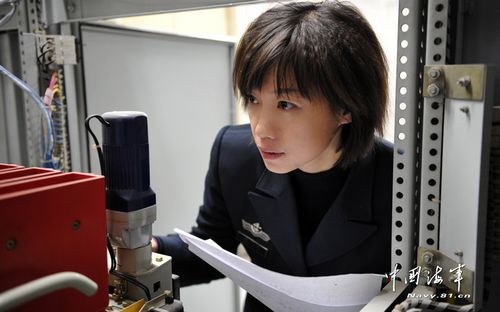Yang Yi, an outstanding alumna of the Wuhan University of Technology, graduated in 1988 with a degree in Ship Design and Construction. She has been awarded two First-Class and seven Second-Class Prizes for Military Scientific and Technological Progress, in addition to receiving second-class and third-class merit citations. In 2010, she was honored as one of the “Navy’s Top Ten Outstanding Youths,” and in 2011, she was recognized as an Advanced Individual in Women’s Contributions to the Military.

With over 20 years of experience in overall demonstration research for naval surface vessels, Yang Yi has completed more than 50 major research tasks, including strategic planning for surface ship development, demonstration of major vessel types, and research on high and new technologies. Her accomplishments have earned her the reputation as a “scientific research pioneer” in the field.
In 1994, a research office at the Equipment Academy secured a project for the conceptual and technical design of a certain type of naval vessel. Against conventional expectations, the project director recommended Yang Yi—known for her excellence in fundamental research—as the outfitting chief designer. She thus became the youngest chief designer in the project.
Yang Yi knew this was both an opportunity and a challenge. She spent her days drawing and calculating at the drafting board. Without a computer, she drew everything by hand, going through countless drawing boards, pencils, and curve rulers. For every design proposal, she conducted repeated comparisons and sought feedback from senior experts until both she and the experts were satisfied.
In the late autumn of 2008, a large naval-air formation consisting of dozens of new-type missile boats and over ten new aircraft conducted a live-fire drill in a certain maritime area.

The new-type missile boat, with its unique design, high speed, and powerful firepower, immediately became the focus of attention—all designed by Yang Yi.
When Yang Yi took on this project on New Year’s Day in 1997, many believed that with new destroyers, frigates, submarines, and combat aircraft being commissioned worldwide, the era of missile boats was fading, and years of effort might lead to nothing. Undeterred, Yang Yi immersed herself in domestic and international theories and technical materials on missile boat development. Through repeated research, design, reasoning, and simulation, she built a solid scientific foundation and experimental confidence in the new boat.
During an outing to Fragrant Hills, the sight of rolling mountains inspired her: why not try a wave-piercing catamaran? She rushed back to her office to sketch, demonstrate, and simulate. Her persistence paid off—Yang Yi succeeded! In 2002, the project received the Second-Class Prize for Military Scientific and Technological Progress.
“How can you stay so joyful after over 20 years of working with silent data and drawings?” many asked. Yang Yi would smile and reply: “When you truly love something and devote yourself to it completely, it becomes a form of enjoyment and happiness.”
On another occasion, Yang Yi took on a project to repair and improve the helicopter deck system of a certain ship. The vessel was semi-complete, with severe lack of technical documentation and incomplete design drawings. Many described the task as “harder than reaching heaven.” After meticulous research, Yang Yi proposed a two-phase strategy: restore equipment based on existing drawings where possible, and redesign and manufacture what was irreparable or missing. She then moved into her office, working day and night for five months until she was nearly exhausted. Her efforts were rewarded—the project succeeded, with multiple technologies filling gaps in China’s domestic capabilities.

In June 2011, Yang Yi volunteered to join the sixth escort mission in the Gulf of Aden, becoming the first female naval vessel equipment researcher to participate in such an operation.
In just the past five years, Yang Yi has undertaken mo